#sacred hearth
Text
The Sacred Hearth
Before I do a deep dive into
my tribes mysticism,
Let me take you to the tribal roots of yours.
Before we had the changes in the suns course and the variations of the seasons, cycles of years, positions of stars, or the nature of living things,
We had the sacred fire.
Arguably one of the greatest mystic
Poets of all time said:
“I purified my lips with sacred fire,
that I may speak of love,
but when I opened my mouth to speak,
I found myself mute .”
Consider malkhut-
The kingdom, sovereignty,
All that is under the All…
Remember how small we are in a cosmic sense.
Specks in the infinite.
In millions of stars
Lies the carbon of your bones.
Whatever that is that makes you
Unique is what makes the universe.
All that started around the sacred hearth. The polarity that strings together
Everything beyond our stratosphere,
Traveled here to find rest
As polarities were reconciled
Inside our Mother Earth.
Rock with me as we take the journey within.
Bumper
Since the dawn of existence,
Fire has been regarded with Awe.
There’s no way of figuring out when humans discovered how to create fire,
but we do know that it revolutionized are very lives.
It provided us warmth in the winter,
and gave us new ways to prepare our dinners,
and protected us from predators, who were afraid of its glow.
Everyone’s OG’s come from the same place.
I hate to take away whatever specialness
the cultural appropriation
Camp has but every single person
Is related to someone who doesn’t have
a complex way of life.
Who came up by a hunter gatherer
Path so anyone can have a connection
to the gigantic fire that
Gave our ancestors safety
And security.
Think about what a sense of well-being would create in our ancestors.
We aren’t the biggest or the fastest predators so imagine how immensely positive an influence our emotional state would experience the first time we weren’t in a fear-based society.
That’s what the sacred fire brings.
Fire was a source of profound mystical experience,
because it created the space for our ancestors to reflect on their condition and gain awareness of the
spiritual dimensions around them.
How do you think the element of fire became an object of veneration?
Not among Alchemists,
Zoroastrians, Hellenists,
Hindus or Kiowas,
Or Pacific Islanders… OR
Anyone who came up
On the earliest religions
Of shamanism.
That pure brand mysticism based purely
On a feeling.
Just you and your intuition in the face of Mother Earth.
Now you can walk in the vestal virgins
and the continuous fire burning
On the altar.
Just don’t stop me when it hits you what I’m talking about.
Cuz All of this started with hearths burning at the center of villages.
People would literally light sticks from the fire in the center of their villages to take back to their huts.
Now look up in any church,or mosque, or synagogue, temple or spiritual place and ask yourself if you see a flame lit anywhere… incense are sure fire
Indicators you’re in a house
Of divinity where the sacred fires stay lit.
This is our history.
Shared before the concepts of melanin or
Differences stood the sacred hearth.
Of course my tribes house of worship was burned down,
Our libraries were burned and our burial mounds were turned into
Housing Developments.
Now you’re with me,
Now we can speak on the deeper pieces
Of our mystical history.
Until then…
Keep breathing in light and living in love.
#next episode#spoken word#sacred hearth#see the poetry#word smith#mysticism#writing#i’m feeling myself
9 notes
·
View notes
Text

#wood stove#cozy aesthetic#hygge aesthetic#hyggevibes#aesthetic#autumn aesthetic#cool weather#wood burning stoves#green energy#hearth witch#hearth and home#sacred hearth#autumn days#autumn nights#cozyvibes#cozy space
4 notes
·
View notes
Text

The Vestal Virgins by Jean Raoux
#vestal virgins#art#jean raoux#ancient#ancient rome#roman#rome#vestals#vesta#goddess#priestesses#priestess#europe#european#history#antiquity#sacred#hearth#flame#flames#architecture#temple#temples#temple of vesta#italy
426 notes
·
View notes
Text

My little kitchen shrine. I got rechargeable batteries for my little light so my "hearth fire" can be an ever-burning fire.
In Germany and parts of the Netherlands a statue or poppet of a witch is placed in the kitchen for protection. This little figurine was a gift from my father years and years ago. ♡
#witchcraft#witch#witchblr#altar#sacred space#mine#kitchen witch#kitchen witchery#hearth witch#hearth witchery
13 notes
·
View notes
Text
any other hearth/home witches in the chat tonight
#hearth witch#hearth witchery#home witch#home witchery#kitchen witch#kitchen witchery#witchcraft#hearth magic#im bored and looking for LOVE(more folks to follow and easy rituals that people do to honor themselves and make their spaces sacred)
6 notes
·
View notes
Text
What is Hearthcraft?
My personal practice in witchcraft is Hearthcraft. If you have ever read The House Witch, it is an excellent read and gives one a good basis for beginning their own hearthcraft adventures. I will be posting about that book in the future, as I go through it chapter by chapter for those out there who are interested in learning more about hearthcraft and how to bring some of it into their own lives. The House Witch discusses the home itself, and the space and energy within. While that is definitely important - and a great place to begin - it is not the only aspect of hearthcraft (imo).
I believe that hearthcraft is three-fold : Hearth, Home, & Garden. Here, when I say "hearth" I mean "kitchen", since most homes originally had the cooking (and often worship of deities) done over the hearth. At its heart, hearthcraft is about turning your home into the safe haven it is meant to be. Not only so you feel safe, and have a wonderful environment in which to rest, recuperate, and work toward your goals, but because if you want to make real changes in your life, you really do need to start at home.
Like I said previously, a great place to begin ones hearthcraft is in the space itself. Feel the energy in your home. What is it like? Does your home have a name it is trying to whisper to you? Is it cluttered? Bare? Feel the space as much as you look at it. Is your home the way you envisioned it when you moved in? Are there improvements you want to make? How would you do that? Hearthcraft is not Feng Shui, but I believe there is definitely some overlap between the two (2), and Feng Shui is also a great thing to implement as a part of your hearthcraft practice. I moved into a new apartment at the end of June, and the place is still a work in progress. (We are getting there, one day at a time).
The next aspect of hearthcraft is kitchencraft, or kitchen witchcraft. Why? Every home has a kitchen. Food nourishes your body, your mind, your soul. What are you eating? How does it make you feel? How do you prepare it? What could be better? Pizza is a prosperity spell, if prepared correctly.
The last aspect is greencraft. Green witchcraft. Gardening. Plants. Bring some life into your home (literally). I have a large balcony, that I am slowly turning into the most wonderful balcony garden. Plants soothe the soul, not to mention gardening is a great way to add healthful, wholesome food into your life. If you do not know where to start, get a cactus. Really. They are nearly impossible to kill (I will still claim this even though my mother has been the in/direct cause of death to several of my cacti over the years).
TL;DR
Your home wants to care for you. But you also need to care for it. By reading the energy in your home in three (3) key areas - hearth, home, and garden - you can start to level up your life.
#hearthcraft#witchcraft#hearth#home#kitchen#kitchen witch#greencraft#green witchcraft#witchery#energy#spiritual#hearth and home#haven#sacred space#home base#love#love your home
42 notes
·
View notes
Text
blessed solstice 🌞
#may your nights be warmer from here on out#celebrating in the old ways with wax and fire and sacrifice. mighty god of the sun if you had not sent winter-proud pan to find me in my#coldest of winters i would have starved. this yule i come to you naked anointed and dancing#as the boy you brought in from colder gods but also as a young man fledged. stone-witness and constant devotee to your rite#laughing across the fields. in wiltshire the flame still flickers in the fen#ruddy cheeked mother nature raises her ale and her babes as the winter relents its hold. mother moon sings sweetly and takes a lover on her#lap— already capped as dancing boy for her meeting at the henge with teaser-painted father-sun tomorrow. gold-tinted beauty who leans close#to me and smells of silbury and all folkloric jacks#my joy. my joy. pagan— pagan. ‘i am woman and man— light with darkness— i am nothing special nothing pure— i am mud and flame’#dark true impure and dissonant. old winter god looks at me from across the fields wistful like a lover who blew it. the lovely world#crossed with wax and water and wine and held by his lordship the sun. hip-sanctified#here now the hearth will burn until we ring in fine imbolc in all its splendour. the wheel of the year ever sacred turns and turns and turns
4 notes
·
View notes
Text
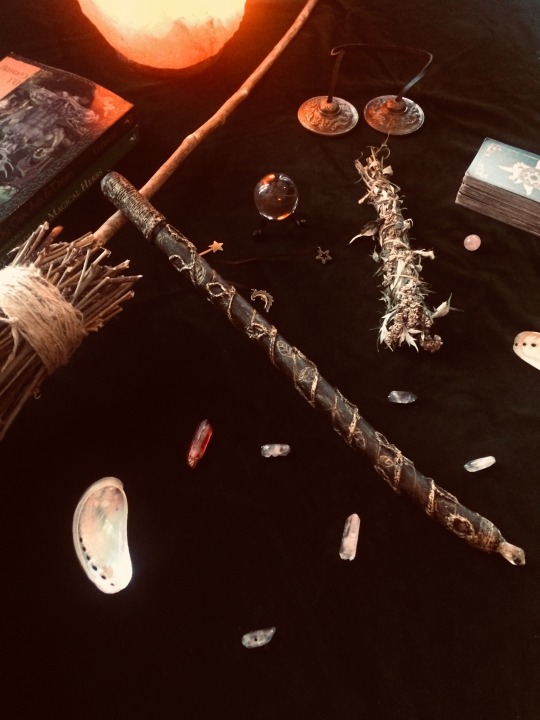
#magical wand#magic wand#sacred wood#protection#casting circles#witchy crafts#witchcraft#white witchcraft#eclectic witch#celtic witch#green witch#hearth witch#hedge witch#etsy alkhemy tales#hand crafted#crafts
5 notes
·
View notes
Text

Im venerating spring & sacred fire in all her forms picsartedit
1 note
·
View note
Text
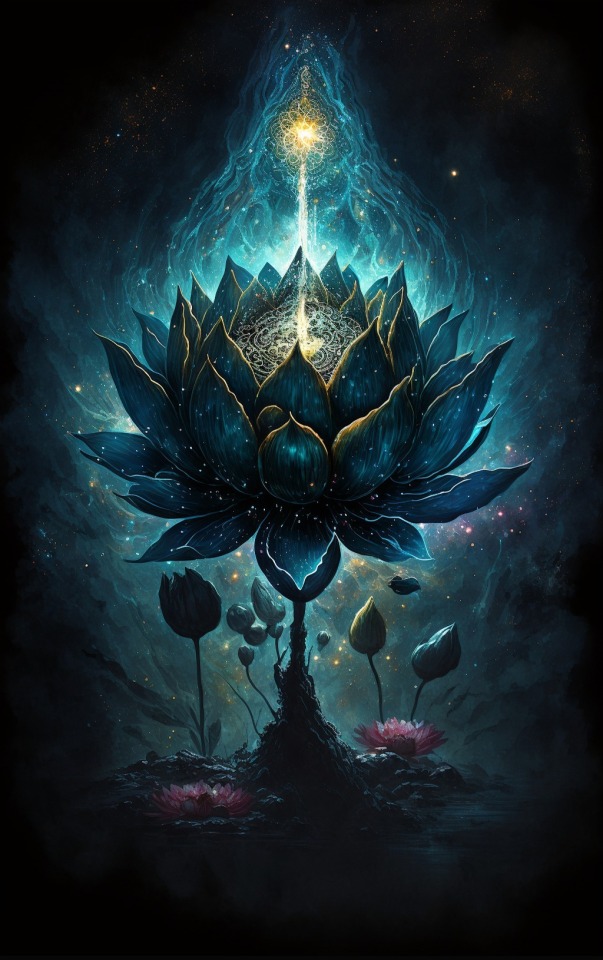
Sacred Lotus
0 notes
Text
South Asian and Hindu Influences in ATLA (Part 1)
disclaimer: i was raised culturally and religiously hindu, and though i've tried to do my research for this post and pair it with my own cultural knowledge, i'm not an expert on hinduism by any means. should i mess up, please let me know.
please also be aware that many of the concepts discussed in this post overlap heavily with religions such as buddhism and jainism, which might have different interpretations and representations. as i'm not from those religions or cultures, i don't want to speak on them, but if anyone with that knowledge wishes to add on, please feel free.
it's well-known that atla draws from indigenous, east and southeast asian influences, but something i rarely see discussed in the fandom is the influences the show takes from hinduism and south asia, and there are actually far more than i think people are aware of.
so here's a (non-exhaustive list) of the main inspirations atla drew from south asian culture and hinduism, starting with...
The Avatar
the title of the show itself is taken from the ancient language of sanskrit, often considered the sacred tongue of the hindu religion. in sanskrit, the word "avatar" means to "descend" or "alight".
the concept of the avatar is a very old one, referring to the physical incarnation of a powerful deity or spirit. the idea of the avatar is most often linked to the god Vishnu, one of three supreme hindu gods collectively called the trimurti, or trinity. the avatar is said to manifest upon earth primarily in times of great need, when balance must be maintained between the forces of good and evil.
atla borrows heavily from this idea in having aang be the incarnation of a divine spirit who returns to the world during a time of immense strife, and is tasked with defeating a great evil to bring balance back to the world. and though i don't know if it was an intentional reference, it's interesting to note that Krishna, the most famous incarnation of Vishnu was also reborn amidst a fierce storm and carried through a raging sea to a new home where he would be protected from the king who sought to kill him. sounds a little familiar, doesn't it?
Agni Kai and the Philosophy of Firebending
the word "agni" derives from the sanskrit name Agni, the god of fire, though it can also generally mean "fire".
the concepts of lightning bending and the sun being the source of firebending are likely also taken from the idea of Agni, since he's said to exist simultaneously in three different forms on three different dimensions: as fire on earth, as lightning in the atmosphere, and as the sun in the sky.
Agni is a significant aspect of many rituals, including marriage rites, death rites, and the festivals of holi and diwali. the concept of Agni is one of duality: life and death, rebirth and destruction. hindu rituals accept and celebrate both aspects, revolving around the idea that destruction is not separate from creation, but rather necessary to facilitate it. the cremation of the dead, for instance, is seen as purification, not destruction: burning away the physical form so the soul is unencumbered, set free to continue the reincarnation cycle.
this influence can be seen in the firebending masters episode, which discusses the idea of fire being vital to life. the sun warriors safeguarding the original fire and demanding that zuko and aang bring fire to the dragons as a sacrifice could also reference the ritual of Agnihotra - the ritual of keeping a fire at the home hearth and making offerings to it. the purpose of this ritual differs depending on which text you refer to, but it is generally believed to purify the person and atmosphere in which it is performed, similar to how zuko and aang must make offerings to ran and shaw and survive their fire before being deemed worthy and pure.
Agnihotra is said to serve as a symbolic reminder of the vitality and importance of fire as the driving force of life, a lesson that zuko and aang also internalize from their encounter with the dragons.
Bumi
bumi's name is taken from the sanskrit word "bhumi", which means "earth". it's also the name of the hindu goddess of the earth, bumi or bhudevi.
one of the things the original animation didn't do and which i really enjoyed about the live action was that they made bumi indian and added desi inspiration to omashu. it makes perfect sense for a king whose name is as hindu-inspired as they come.
NWT Royal Palace
chief arnook's palace in the northern water tribe takes inspiration from the gopurams of hindu temples, massive pyramidal structures that served as entrance towers to the temple.


gopurams were built tall enough to be seen for miles around, beacons to signal tired or weary travellers who wished for a place to rest that a temple was nearby. it's a nice touch that the chief's palace is located in front of the spirit oasis, a similarly symbolic entryway to a sanctuary housing otherworldly deities.
Betrothal Necklaces
to preface: i doubt this was an intentional reference, and this great post talks about other cultures that could have inspired the water tribe betrothal necklaces. given the desi influence in the nwt architecture however, i figured it was worth mentioning.
the idea of betrothal necklaces being given to women by their male partners is similar to the thaali, a necklace given to hindu wives by their husbands. during hindu weddings, grooms tie the thaali around their brides' necks to symbolize their marriage. once given, wives are expected to wear their thaali till the day they die, as doing so is believed to bring good luck, health and prosperity to their husbands.
Chi-Blocking
though chi-blocking takes primary inspiration from the art of Dim Mak, it is also influenced by the south indian martial arts forms of adimurai and kalaripayattu, both of which include techniques of striking vital points in the body to disable or kill an opponent.
kalaripayattu also shares parallels with firebending, being a very physically demanding, aggressive martial art that emphasises the importance of discipline and mental fortitude. control of the mind is essential to control of the body, a philosophy similar to that espoused by iroh across the show.
Wan Shi Tong's Library
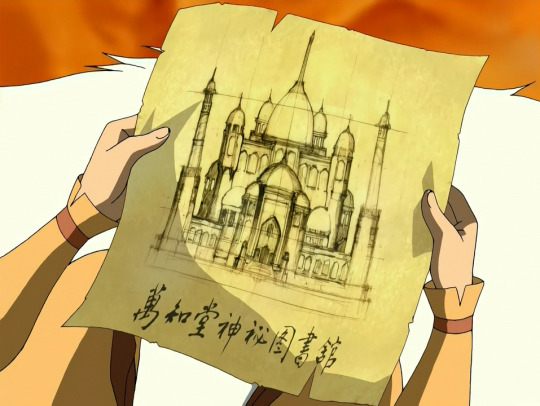
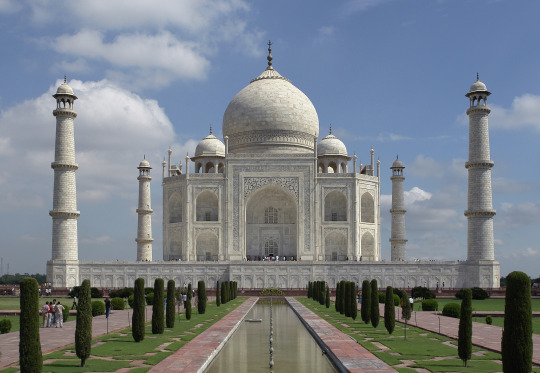
the library draws inspiration partly from the taj mahal, the famous mausoleum constructed by shah jahan during the mughal empire as a monument to his beloved wife, mumtaz mahal.
i'll end this post here since it's getting too long as it is, and the following section will be even longer. for while atla treated the concepts in this post with respect, the same unfortunately cannot be said for its depiction of guru pathik and combustion man - both of which we'll be discussing next.
754 notes
·
View notes
Text
Imbolc Altar Ideas & Correspondences

Imbolc, also known as Candlemas or Brigid's Day, marks the halfway point between the winter solstice and the spring equinox. It's a time to celebrate the returning light and the awakening of the Earth.
Altar Decorations:
Candles: Imbolc is strongly associated with the element of fire. Decorate your altar with candles in shades of white, yellow, and light blue to represent the increasing daylight.
Brigid's Cross: Craft or purchase a Brigid's Cross, a traditional symbol associated with the Celtic goddess Brigid. Hang it on your altar as a protective charm.
Seasonal Flowers: Place early spring flowers like snowdrops, crocuses, and daffodils on your altar. These symbolize the first signs of life returning to the land.
Herbs: Incorporate herbs such as rosemary, thyme, and cinnamon for their purifying and invigorating properties. Bundle them together with a red or white ribbon.
Seeds: Represent the potential for growth by adding a dish of seeds to your altar. Consider seeds associated with early spring crops like wheat or herbs.
Imbolc Symbols: Include symbols like lambs, ewes, and the sun to capture the essence of this seasonal transition.
Candle Holders: Choose unique candle holders or lanterns to enhance the ambiance. Consider using candle holders in the shape of suns, stars, or nature-inspired designs.
Divination Tools: Add divination tools like tarot cards or runes to your altar for seeking guidance during this transitional period.
Symbolic Stones: Integrate crystals such as citrine for abundance, aquamarine for clarity, and moonstone for intuition. Arrange them aesthetically around your altar.
Feathers: Symbolizing air and spirituality, feathers can be incorporated to invoke the energy of the season. Choose feathers from birds associated with the goddess Brigid, like swans or owls.
Artwork: Display artwork or illustrations that resonate with the themes of Imbolc. This could include depictions of Brigid, snow-covered landscapes, or symbols of growth and renewal.
Imbolc Incense: Craft or purchase incense blends with scents like frankincense, myrrh, and chamomile to fill your sacred space with a soothing and purifying aroma.
Correspondences
Goddess Brigid: Imbolc is sacred to Brigid, the Celtic goddess of hearth, home, and inspiration. Invoke her energy for healing, creativity, and protection.
Colors: White, yellow, light green, and light blue are associated with Imbolc. Use these colors in candles, altar cloths, and decorations to align with the festival's energy.
Stones: Crystals such as amethyst, garnet, and clear quartz resonate with Imbolc's energies.
Foods: Dairy products, especially cheese, and foods made with seeds like bread or muffins are fitting for Imbolc. Set offerings on your altar or incorporate them into your celebration feast.
Water: Imbolc is also associated with the element of water. Include a small bowl of water on your altar to symbolize purification.
Creativity Symbols: Imbolc is a time for inspiration and creative endeavors. Include symbols of your creative pursuits, such as a paintbrush, musical instrument, or writing quill.
Anointing Oils: Create or purchase anointing oils infused with herbs like lavender, rosemary, and frankincense. Use them to anoint candles, tools, or yourself during Imbolc rituals.
Animal Representations: Incorporate figurines or images of animals associated with Brigid, such as lambs, cows, or swans, to honor her connection to the animal kingdom.
Wheat or Corn Dolls: Craft small dolls from wheat or corn husks, symbolizing the harvest to come. Place them on your altar as a representation of the Earth's fertility.
Bell or Chimes: Hang a bell or wind chimes near your altar to symbolize the awakening of nature and the stirring of life. Ring it during your Imbolc rituals to mark significant moments.
Decorative Cloth: Choose an altar cloth with intricate patterns or symbols related to Imbolc, such as suns, wheels, or Brigid's crosses, to add a touch of magic to your sacred space.
May you find warmth in the returning light. <3
#pagan#witchcraft#paganism#witch#occult#wicca#dark#magick#neopagan#wiccan#imbolc#february#witchblr#imbolg#brigid of kildare#goddess brigid#st brigid
668 notes
·
View notes
Text
LISTEN, listenlistenlisten. james will never hate sirius. he cannot breathe without him. he cannot eat without him. he cannot sleep. they are all wrapped up in one another - blood and bones and gore. but. BUT. i will never believe any telling of the prank in which james does not lose it on him. not for some moral reason, not for something so trivial as sirius doing the wrong thing. but because, in that moment, sirius violates the most sacred thing to james. his boys. his family. the four of them. it has nothing to do with right or wrong or snape being, or not being, killed. it has to do with the betrayal of remus. of this thing. this thing between the four of them - this home, this hearth, this fire that warms our skin and lights our way. it is meant to be the most important. it is meant to be sacred. james would die for it. he would kill for it. he would eat himself alive for it. and he believed - in his heart of hearts - he believed that sirius felt the same. and then. AND THEN. im sorry but there is no way that james shrugs that off. i mean this betrayal is biblical. blood of my blood. bone of my bones. how could you do this? and more than making him question sirius, it makes him question himself, does he even know himself? what kind of person is he? he flicks through a thousand memories, picking them apart, for all the moments where he let remus down. let peter down. his world is shaken by this. he will never hate sirius. he will always let him back in. always forgive him eventually, because he cannot live without him. but the prank is a bruise that never heals. that they, all four of them, press on every once and a while. to remind themselves what a sharp blade love is.
#i swear i will answer messages at some point when i have the brain capacity#in the mean time please take this rambling mess#i am feeling dramatic today#sirius black#james potter#prongsfoot#soph rambles
924 notes
·
View notes
Text
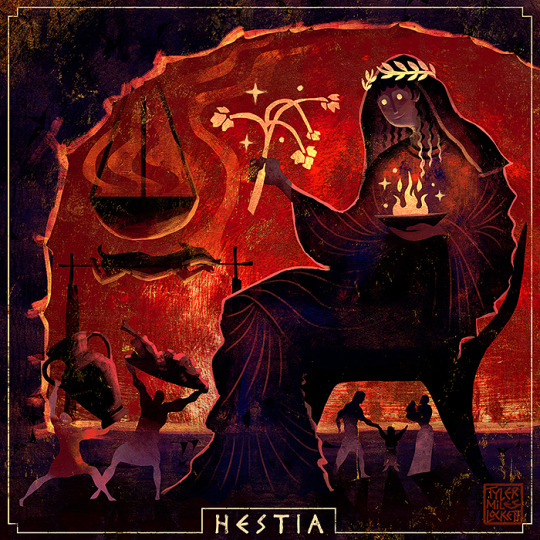
HESTIA illustrated by me
“Hestia, in the high dwellings of all, both deathless gods and men who walk on earth, you have gained an everlasting abode and highest honor: glorious is your portion and your right. For without you mortals hold no banquet, —where one does not duly pour sweet wine in offering to Hestia both first and last.” (-Homeric Hymn, translated by H.G. Evelyn white)
HESTIA (heh-stee-uh) was the virgin goddess of the home and hearth fire, where the families ate and congregated. She oversaw cooking of meals, and sacrificial food for feasts. In my image she sits aside a giant hearth fire. In her right arm she holds a chaste-tree, (signifying chastity and virginity) while in her left hand she holds the sacred hearth flame. Under her golden wreath sits a veil upon the top of her head. to the left we can see the cooking pot and roasting meat, as well as mortals below offering and sacrificing food and wine in her honor.
Although she doesn’t appear in so many myths as her siblings, one story in particular is worth recounting which reveals her character. When Dionysus came to take his place amongst the gods of Olympus, Hestia, wanting to avoid drama, generously gave her seat to him, and took her place in the center of the throne room to tend to the divine hearth fire.
Support my book kickstarter "Lockett Illustrated: Greek Gods and Heroes" coming in early 2024.
#pagan#hellenism#greek mythology#tagamemnon#mythology tag#percyjackson#dark academia#greek#greekmyths#classical literature#percy jackon and the olympians#pjo#homer#iliad#classics#mythologyart#art#artists on tumblr#odyssey#literature#ancientworld#ancienthistory#ancient civilizations#ancientgreece#olympians#greekgods#agamemnon#troy#trojanwar
468 notes
·
View notes